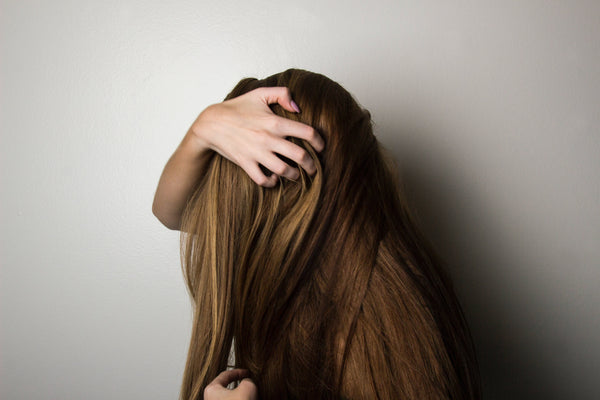
The Ayurveda Experience February 10, 2023
A beautiful, lustrous, and healthy mane is often associated with good health and well-being. As an essential part of your appearance, it can be a significant part of your identity. Over the years, you may have tried various kinds of specialized shampoos, hair treatments, serums, or even hair packs, but the results may not have been what you desired.
The world-renowned ancient and holistic wisdom of Ayurveda believes that your hair is a reflection of your constitution or physical state. To keep your mane healthy, ancient Ayurvedic texts recommend various techniques, one of them being the use of dosha-specific oils. There is a special significance given to oils derived from natural herbs. Amongst them, ancient Ayurvedic scholars believe bhringraj stands out as a clear winner.
In this article, let's deep-dive into understanding bhringraj, its overall health benefits as per your dosha, and the innumerable medicinal benefits it offers to your hair.
As part of the sunflower family, bhringraj or Eclipta prostrata comes from a plant known as false daisy. This miraculous Ayurvedic herb, native to Thailand, India, Nepal, and Brazil, is also known as 'Kesharaja' or 'king of the hair.' As a rasayana (rejuvenating) and keshya (hair growth-enhancing) herb, it has been used in hair care for its unique ability to promote hair growth and overall strength.
The Ayurvedic properties of bhringraj are:
Rasa (taste): Katu (pungent) and Tikta (bitter)
Guna (physical property): Laghu (lightweight) and Ruksha (dry)
Virya (composition): Ushna (hot)
Vipaka (metabolic property): Katu (pungent)
The sacred texts of Raj Nighantu specify the three classifications of bhringraj based on its nature: Shweta Bhringraj (white-hued blossoms), Peet Bhringraj (yellow-hued blossoms), and Neel Bhringraj (blue-hued blossoms). Although each one of these is used to produce oil, the most commonly used one is Shweta Bhringraj or the white-hued blossom. This herb can be used in the form of a taila (oil), churna (powder), or supplement for maximum benefits.
Bhringraj is known to be tridoshic in nature, which means it helps balance all the doshas - Vata, Pitta, and Kapha. Owing to its bitter and pungent taste, it calms the Vata dosha, while its hot potency helps balance the Kapha dosha. It is especially effective in pacifying the Pitta as well.
While combining the bitter and cooling properties of bhringraj, it acts as a rejuvenating tonic and works throughout the tissue layers (rakta dhatu). This herb cools the fiery Pitta that can affect hair follicles and cause hair thinning and greying.
Although bhringraj is primarily known for its rejuvenating properties and hair growth-promoting effects, its benefits extend way beyond luscious locks. Some of the Ayurvedic benefits it offers to the body are:
An ideal herb to support a lustrous and robust mane, bhringraj helps the hair in innumerable ways. Bhringraj oil, in particular, contains terpenes, phenols, and flavonoids that enhance hair health and reduce oxidative stress. Let's dive into the details and look at some of its benefits below:

READ MORE: What Causes Hair Thinning? Ayurvedic Perspective And Remedies
There is sufficient anecdotal and Ayurvedic evidence that suggests the use of bhringraj as a hair rejuvenator. Here are some ways in which you can use carrier oils along with this herb:
While bhringraj oil is known to be a hair rejuvenator, keep the following tips in mind while using it:

READ MORE: Seven Ayurvedic Herbs For Strong And Healthy Hair
The wonder herb bhringraj is a popular and effective recommendation in age-old Ayurvedic texts. You're bound to better manage a multitude of ailments such as liver conditions, diabetes, troublesome metabolism rates, inflammation, and pain.
To add to this, the skin and hair benefits such as reduction of premature greying, dandruff, baldness, and promotion of thick, healthy, and glowing hair with radiant-looking skin only make this herb the rejuvenator that it is.
Try iYURA's Ambhring Age Embrace Revitalizer and Hair Oil - with the goodness of Bhringraj and Amla
Comments will be approved before showing up.















